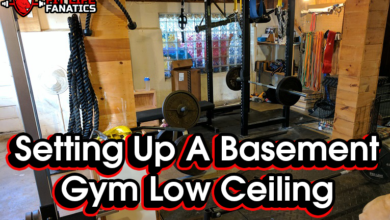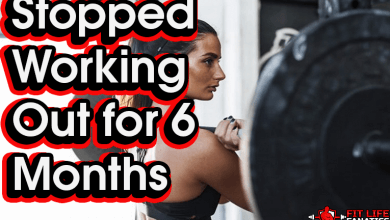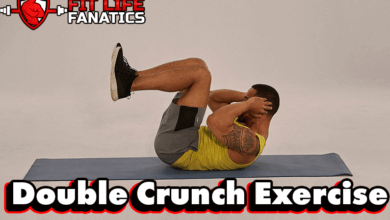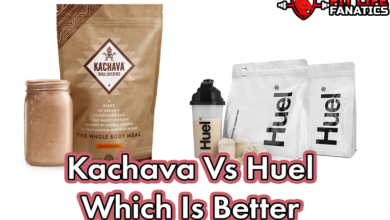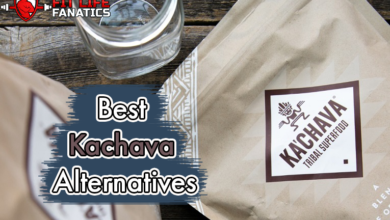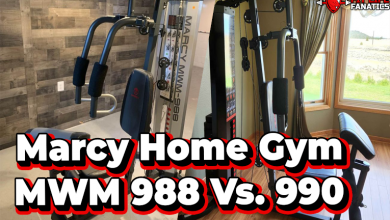Can You Grow Your Glutes with Resistance Bands?
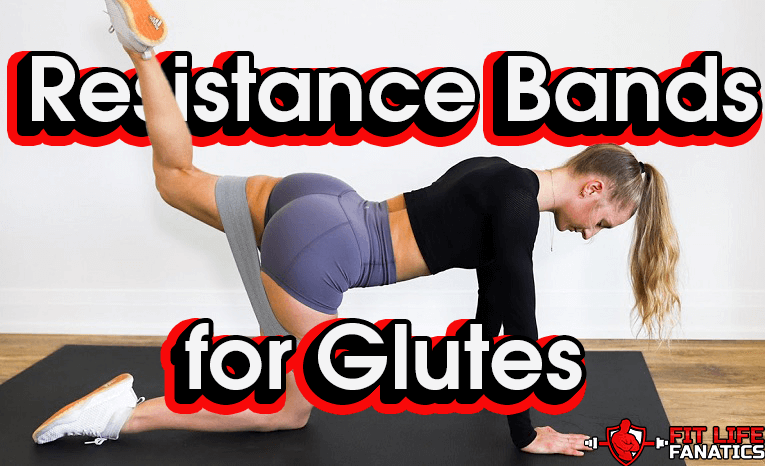
We don't know when resistance bands started to be called 'Booty bands'. But the name’s on point.
Resistance bands can help you tone your tush. What's amazing is that there's no dearth of exercises you can do with them either.
But considering that glute muscle hypertrophy demands a fair bit of progressive resistance, how much growth can resistance bands help you achieve?
A lot of athletes who seek gluteal hypertrophy (i.e., big bums), but do not have access to gyms and squat racks, ponder on this. As someone who spends 6-months travelling because of my job, I did too.
So, I spent weeks researching how much can Booty bands help you in your gluteal hypertrophy journey.
I have to admit that for all the research I did, the answers were not very conclusive. But I got a fair idea of the kind of gains you can expect.
That's what I am going to share with you in this article.
Can you grow your glutes with resistance bands?
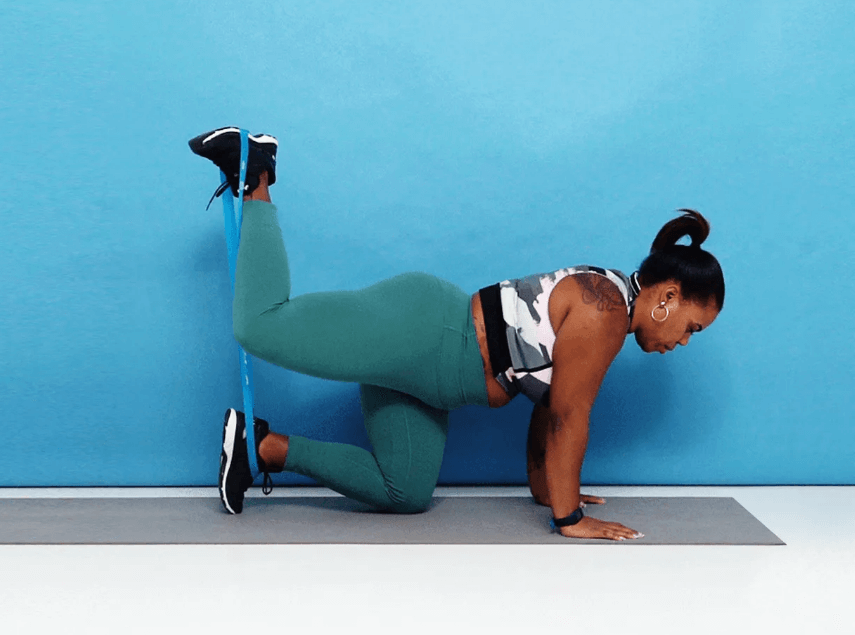
The big story short, is that you can.
Regardless of whether you use resistance bands or dumbbells or kettlebells, the rules of hypertrophy remain the same.
Provide progressive resistance and eat in a calorie surplus. That's all that it boils down to. When it comes to resistance bands, it's the first part that's a little tricky.
We will explore this in detail too.
Resistance bands for bigger glutes
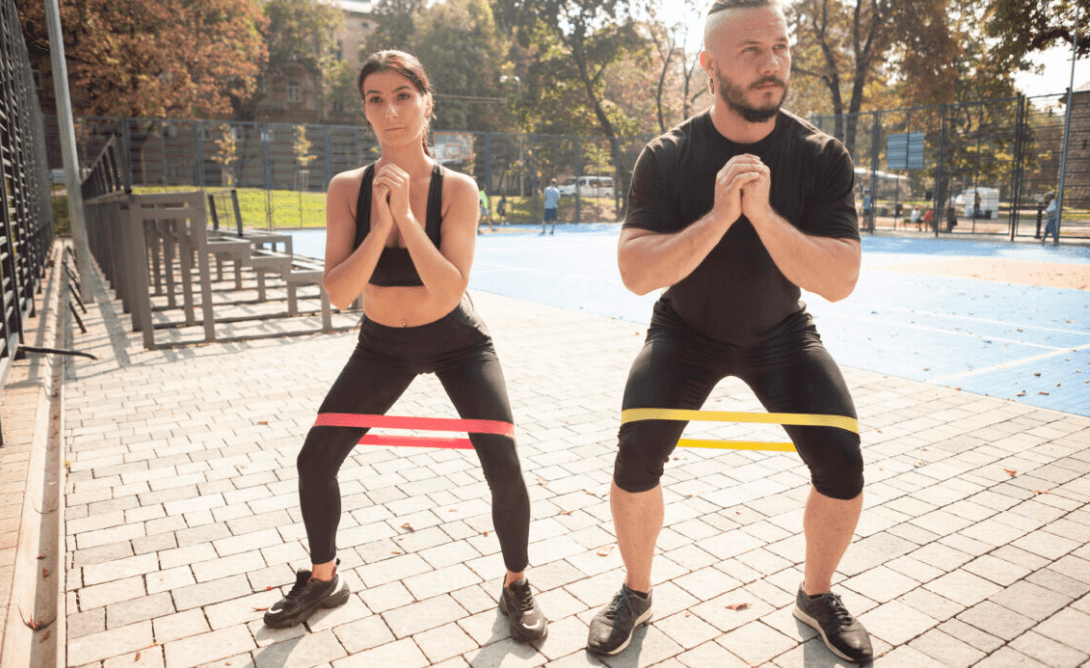
Your gluteus maximus is your biggest muscle group for a reason. It is tasked with some of the most demanding functional responsibilities. As a result, achieving gluteal growth requires an emphasis on load and volume.
In a nutshell, you need bands that can put that massive muscle group under constant stress.
Can bands do this?
Sure, they can.
But we are not talking about the flimsy bands that you get for a few bucks. We are talking about bands that provide progressive resistance.
The Resistance bands that I use

Now, this is subjective. But here's a set of resistance bands that I have used and can recommend.
The resistance bands that I use are 'Fit Simplify Resistance Loop Exercise Bands'. You can get this on Amazon.
Fit Simplify Resistance Loop Exercise Bands - Why I recommend them
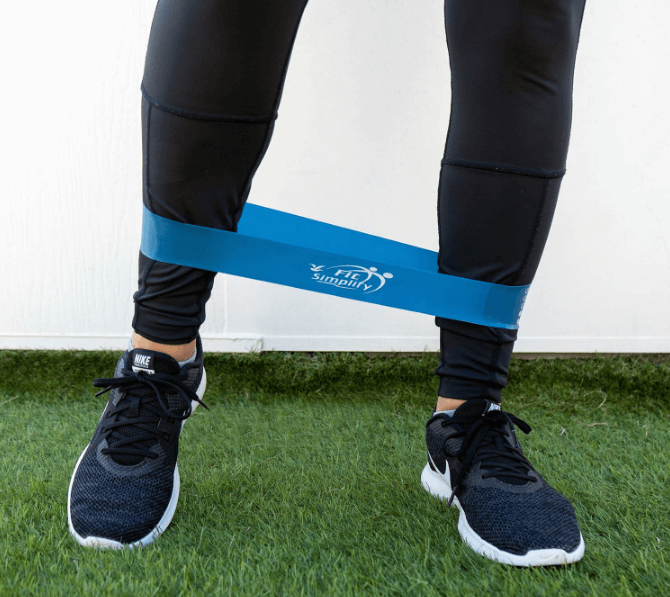
The Fit Simplify Resistance Loop Exercise Bands are a set of 5 resistance bands that offer varying levels of resistance.
There's Green which is X-Lite and perfect for beginners, Blue which is Light, Yellow which is Medium, Red that's heavy and Black, which is X-Heavy. The bands are made of hypoallergenic latex and are gentle on the skin.
Each band is about 12" x 2", and should fit athletes of all sizes without rolling or snapping at the joints.
What I like about them
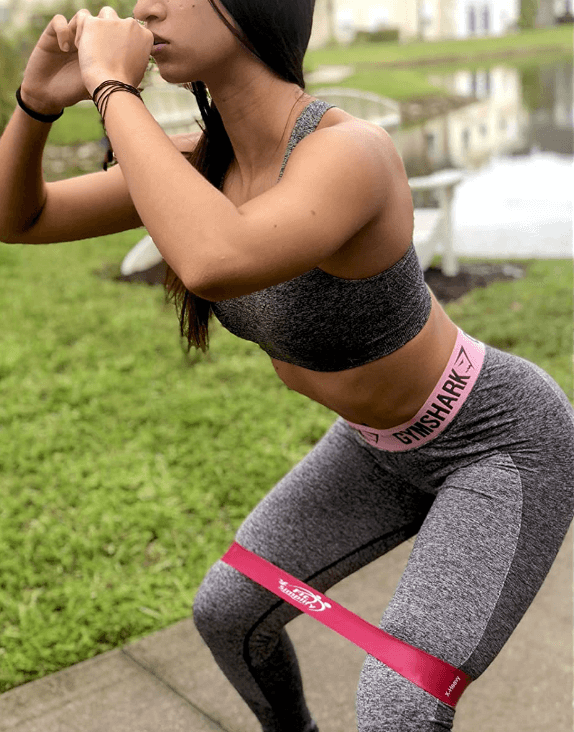
Most generic resistance bands that I used were either too flimsy for booty exercises or would not offer the kind of resistance I desired.
The Fit Simplify Resistance Loop Exercise Bands, on the other hand, have both going for them. Plus the set of five will provide progressive resistance through multiple sets of glute exercises.
Regardless of whether you are a beginner or an advanced athlete, this will fit the bill. And if you have a mom butt, these exercises will help you get rid of it and get a firm jiggly butt.
Another important feature is their length. At 12" x 2", each band offers plenty of leeway even when you go all out during your glute workouts.
Best features
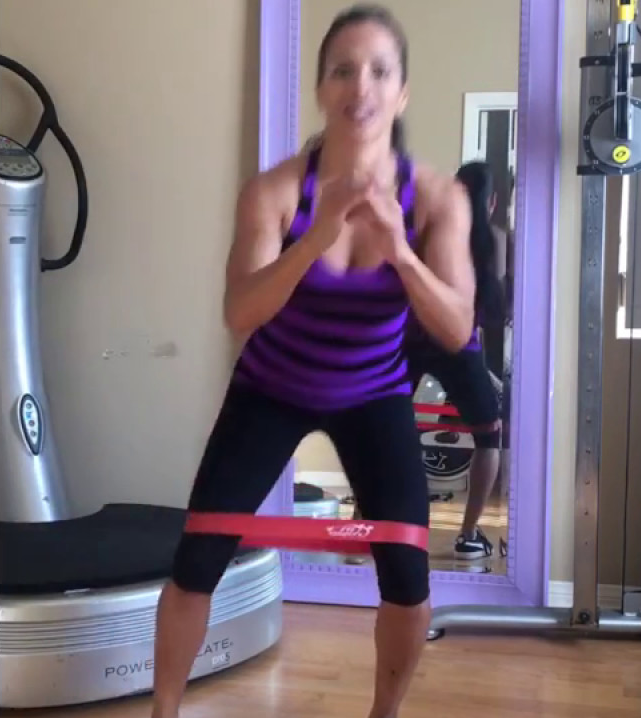
- Set of 5 resistance bands
- Made from premium latex
- Does not roll or snap at the joints
- Progressive resistance
- 12" x 2" makes them well suited for a variety of exercises
- Comes with a storage bag
The Anatomy of the Glutes
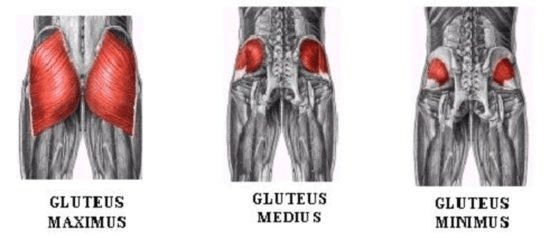
If you are skeptical about the effectiveness of resistance bands in glute development, knowing the anatomy of the glutes will help you understand why it's so effective.
The glutes are made up of three muscles – the gluteus maximus, medius and minimus.
Gluteus Maximus

This is your biggest muscle group, and among other things, it helps you extend the hip to push off from a squat position. It also extends the thigh backwards when standing on one leg.
In terms of movement patterns, it's involved in hip abduction and external rotation, hip extension, posterior pelvic tilt and trunk stabilization.
Combined with your adductors (adductor magnus), it plays a role in hip hyperextension which is the action that happens when you do glute bridges.
Gluteus Medius
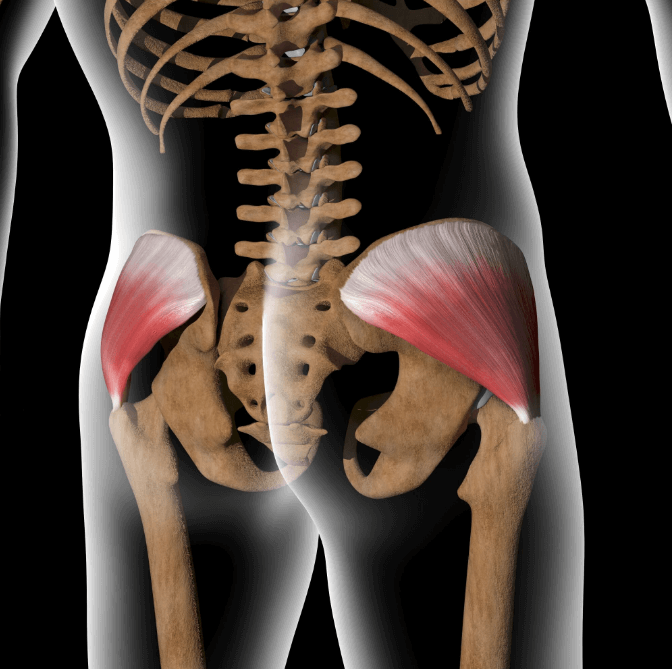
This muscle arises from the outer surface of the ilium (part of the pelvis) and inserts on the lateral surface of the greater trochanter (bony projection near your hip).
As for movement patterns, it performs abduction & medial rotation of thigh. Along with glute max, it's involved in extension at hip. Together with other muscles like TFL (tensor fasciae latae) and hamstrings, it assists with hip flexion.
You use this muscle to stabilize your body during single leg weight bearing activities.
Gluteus Minimus
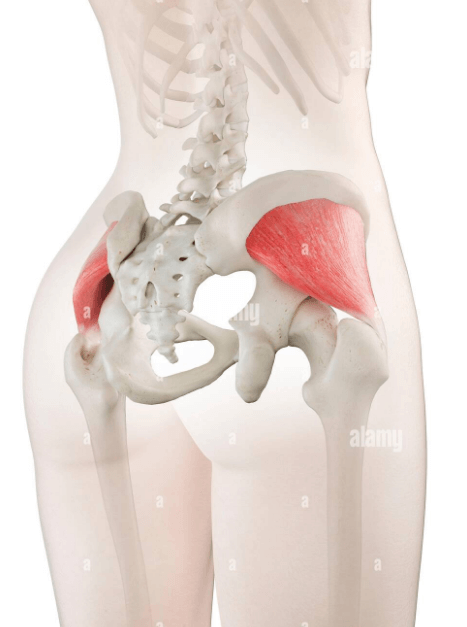
This is the smallest of the three gluteal muscles, but it's still important for body balance and performing athletic movements like jumping and climbing.
As for movement patterns, it assists with abduction of thigh and medial rotation. It also helps extend the hip.
Combined with TFL, minimus is involved in hip flexion.
Depending on where you position resistance bands during the movement you perform, it can target any of the gluteal muscles and even multiple ones at the same time.
Types of Resistance Bands
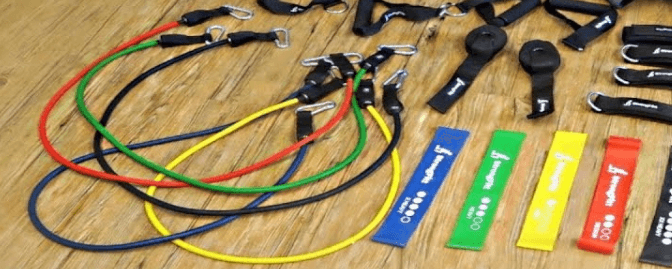
While they might look like mirror replicas of one another, resistance bands actually come in many different forms.
Here's an overview of the common types:
Loop Bands
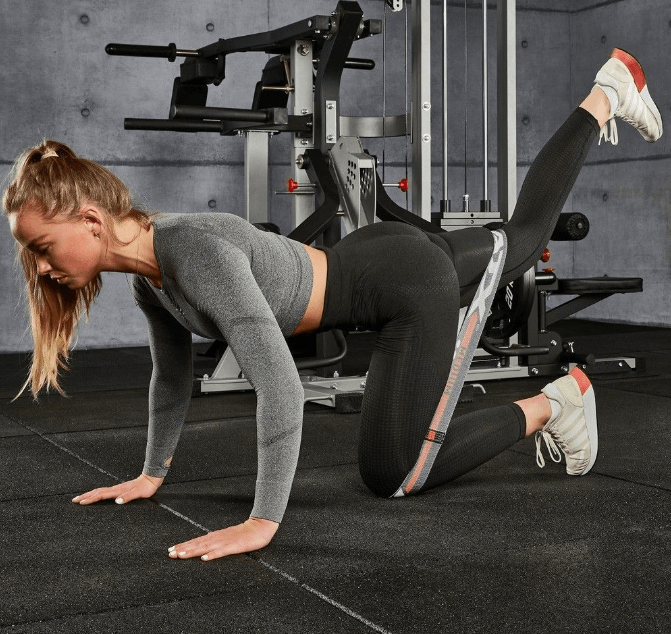
Loop bands are the simplest of them all. They are flat and resemble a rubber band, and you make a loop with them.
Every brand offers different thicknesses of loop bands that help provide varying levels of resistance.
Tube Bands
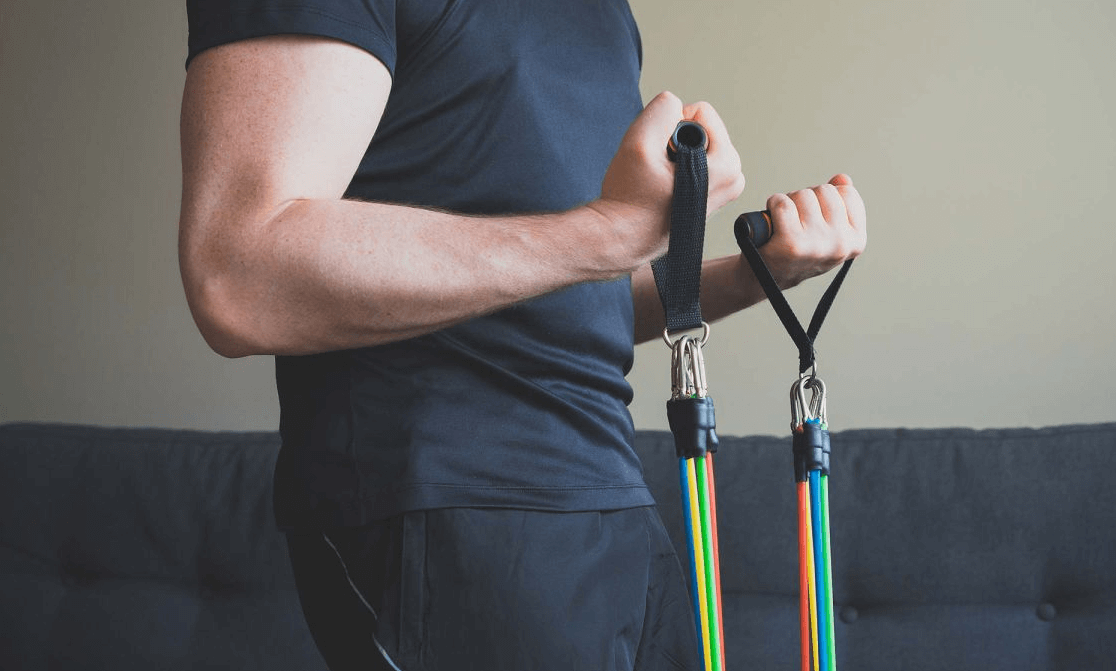
Tube Bands, as implied, look like a mini version of a tube. They come in varying widths, and feature hand grips on both ends. These are generally used for upper body resistance training rather than booty building.
But that does not mean they won't help strengthen your glutes. They are great for all kinds of stability exercises too.
Figure 8 Bands
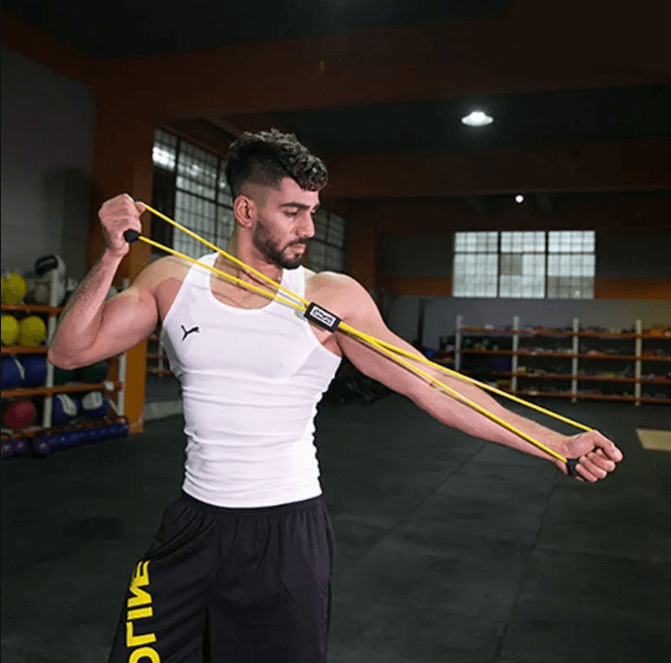
These bands feature a figure eight design. They are known for being the longest type of resistance band, which gives you more flexibility on where to place them for various exercises.
Sheet Bands
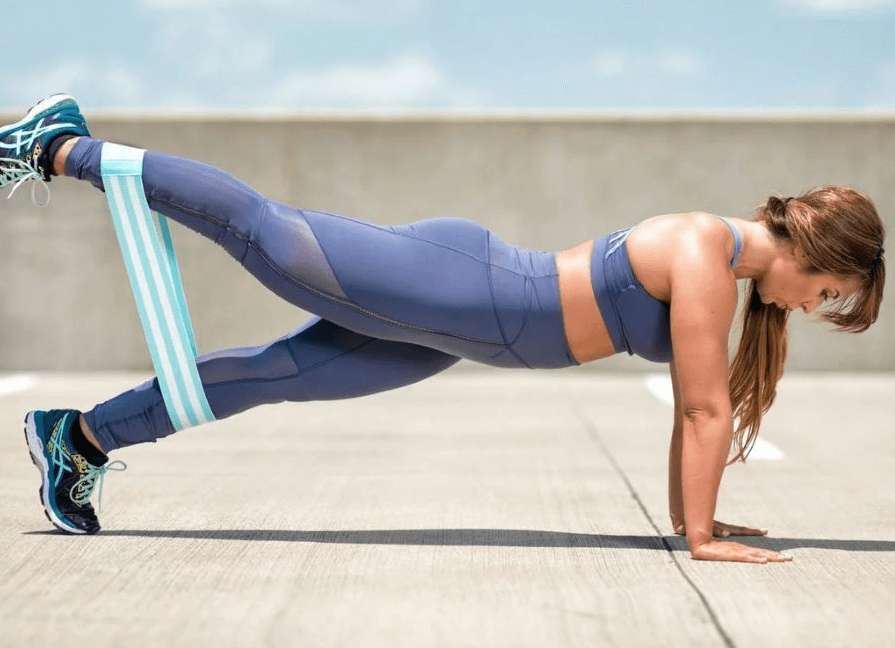
These bands are more elastic than loop bands. Think of them like a large, oversized rubber band. Generally, sheet bands are used in therapeutic and rehabilitation exercises.
How do I know which glute resistance band to use?
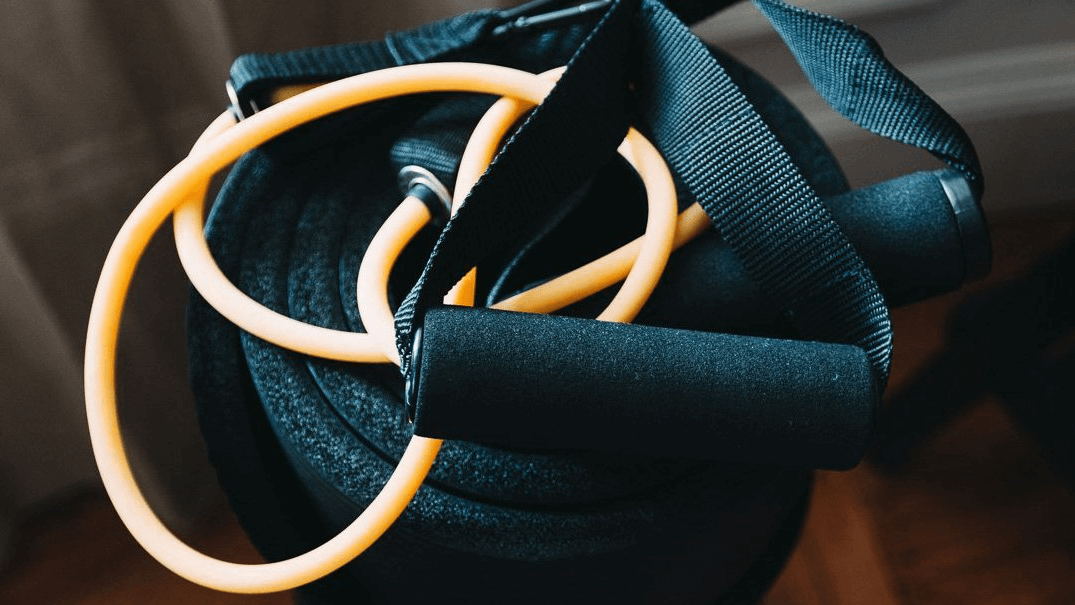
To be honest, there's no preset template that you can use as a guide. The type of glute resistance band that will work for you is more of a personal preference, than a universal choice.
I tried tube bands because they seemed to be the most versatile. However, I was disappointed to find that they were not as durable and fidgeted a lot when I used them.
Eventually, I settled on the Fit Simplify Resistance Loop Exercise Bands, which as you'd know by now are loop bands.
So, just experiment with a few sets and pick one that feels best to you.
Best Resistance Bands for glutes
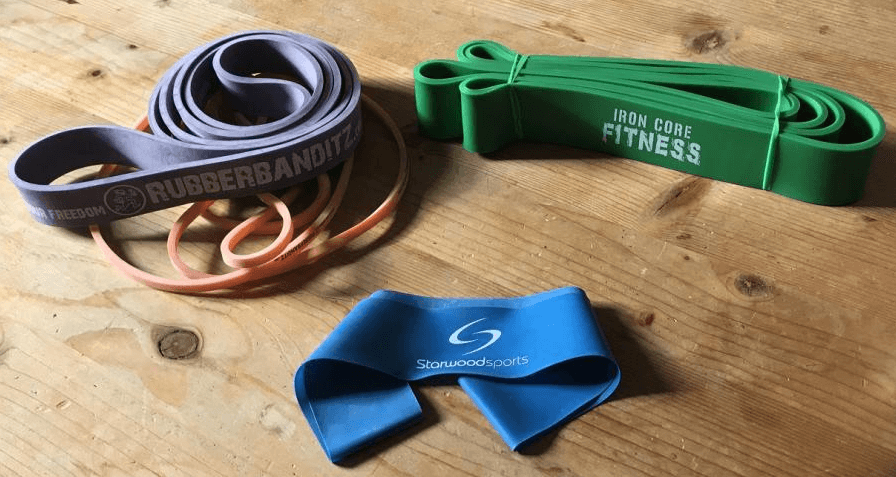
Here's a look at the best resistance bands for glutes.
#1 - The Gym Bucket Non-Slip Fabric Adjustable Resistance Band Set
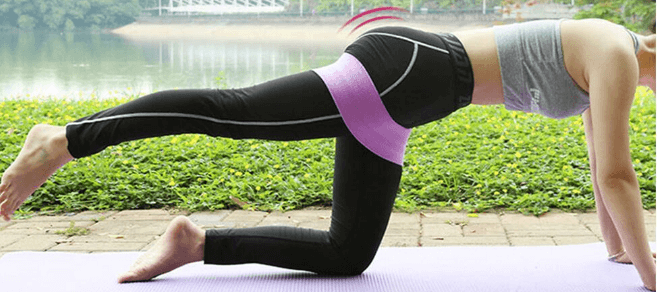
One of the biggest gripes that people have with loop bands is that they tend to roll.
At least the cheap ones will.
The Gym Bucket set uses a non-slip fabric which stays in place against your skin. The advantage of this is that you don't have to worry about the band slipping around during exercises.
This also leads to greater tension, because the resistance band doesn't lose contact with your skin or clothing when you stretch them out. Also, unlike the Fit Simplify, which is a set of five different loop bands, this is just a single band which is tension adjustable.
You just need to tug on the adjustable strap to tighten the resistance.
What I like about it
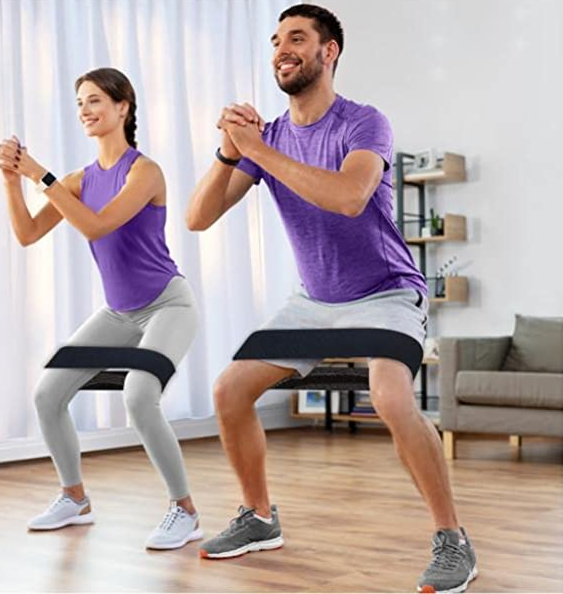
The Gym Bucket Resistance band is a thicker and heavier duty option. It's also single looped which means you get the pull from just one side. This gives it a more uniform tension throughout.
The band is made of a tear proof polyester elasticized fabric, with non-slip latex strips. This means it won't roll or slide when you are using it.
And there are customers who have used this for years with zero complaints of the band losing its elasticity either.
Possible quibbles
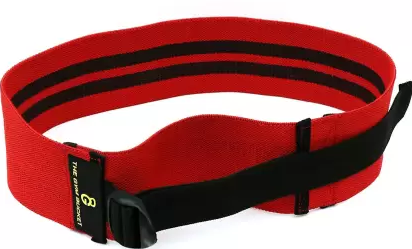
It's a little pricey. But if you are looking for a heavy-duty option, and the single loop makes sense to you, then this is worth checking out.
#2 - Walito Resistance Hip Loop Bands
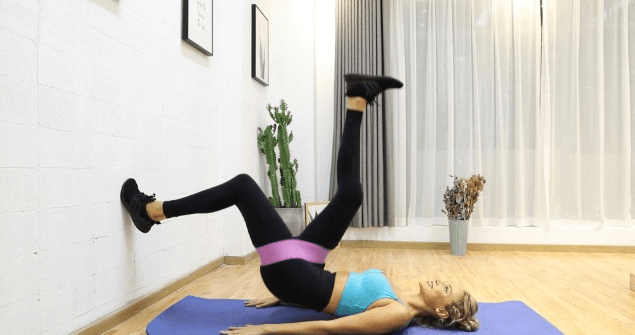
One of the common gripes that people have with latex resistance bands is their tendency to roll up during exercise.
Also, some people are allergic to latex, which pretty much rules them out.
The Walito hip loop bands are made of latex but covered with a layer of stretchy, skin-friendly fabric, which is like the best of both worlds. You get the elasticity of latex, minus the flaws.
It is a set of three, color-coded bands that go from 14 lbs. to 50 lbs. of resistance. So, you can start with light resistance, and gradually work your way up to more intense workouts over time.
What I like about it
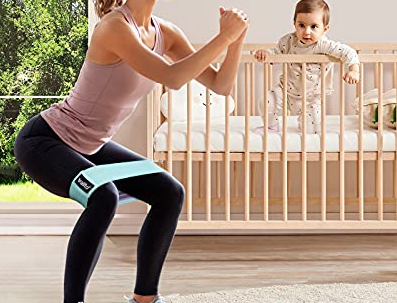
The Walito hip loop bands are a nice middle ground. They provide you enough resistance for your glute exercises, but they don't cost an arm and a leg either.
The exterior fabric does not pinch the skin, nor does it smell icky after a sweaty workout. Also, they are slip resistant. So, they stay in place once you start exercising.
Possible Quibbles
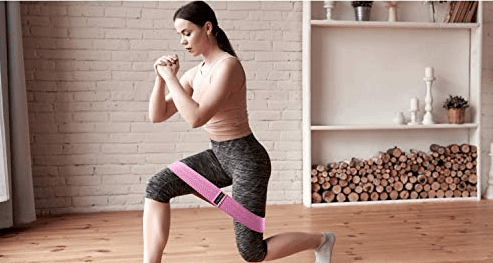
Some people prefer a more gradual increase in progressive resistance. That's where something like the Fit Simplify Resistance Loop Exercise Bands offer much better bang for your buck.
Benefits of resistance bands for glutes
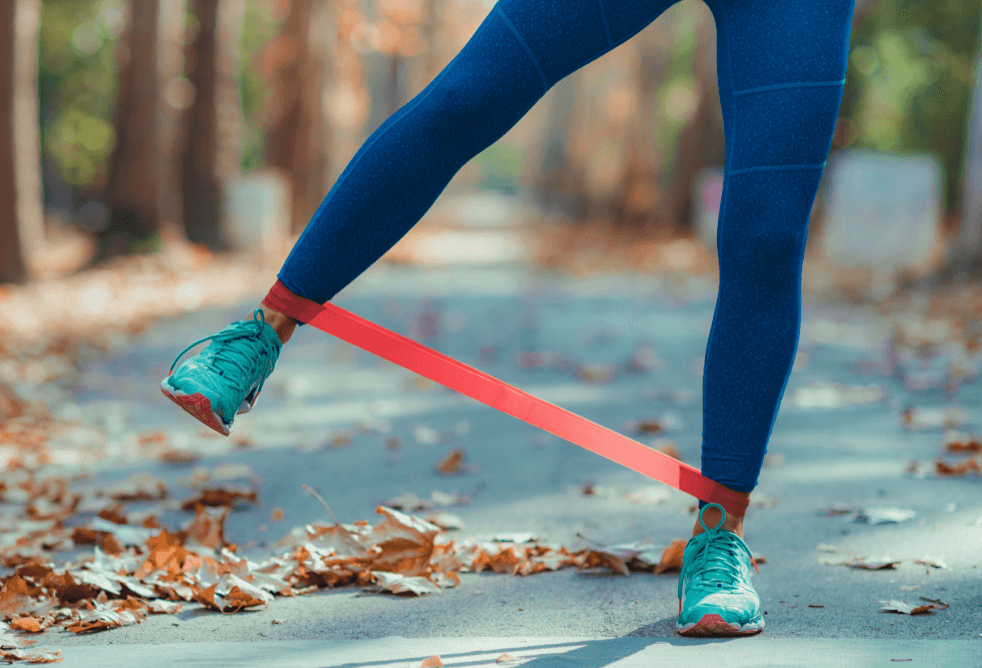
There's a common misconception that the only way to a strong and perky bubble butt is through heavy squats and lunges.
Couldn't be further from the truth.
Resistance bands offer an equally effective and slightly more advantageous way to firm and shape your glutes.
They improve flexibility, boost strength and power in the glutes, help with balance and stability, and will improve your posture.
Each one of these claims is backed by clinical studies mind you, that were conducted on rugby players. So, there's ample evidence to show how effective they are.
Also, because they are so compact and lightweight, you can take them with you anywhere - on a vacation, to the office or even carry them in your purse.
Best Resistance Bands exercises to grow glutes
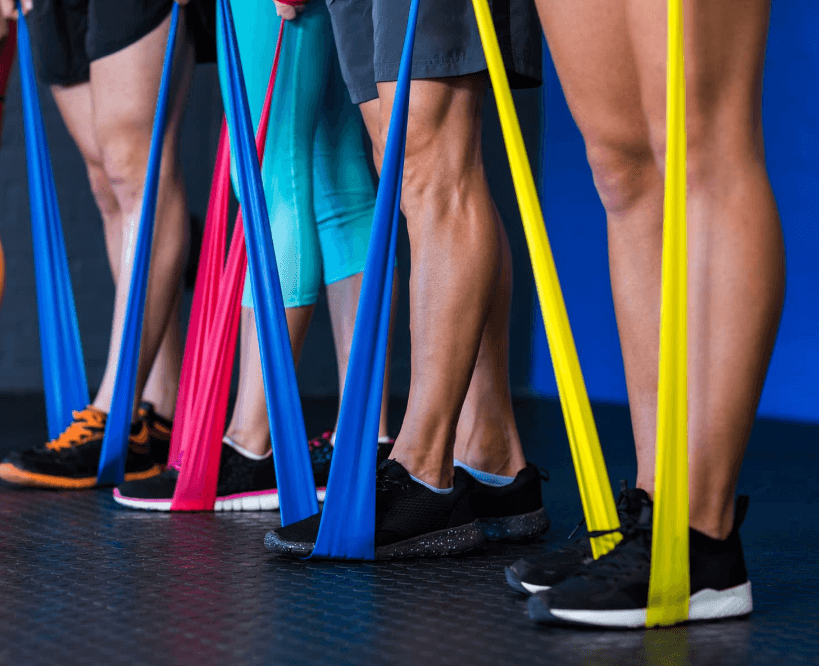
Alright. Now you know why bands work and which ones work best. Let's hop straight into my favorite resistance band exercises which have helped me perk up and strengthen my booty.
#1 - Banded Donkey Kicks or Rainbow Kickbacks (My Personal Fav)

Banded Donkey Kicks or Rainbow Kickbacks are an excellent way to target the gluteus maximus, the largest of your three glute muscles. I like to do these in combination with banded squats, because the latter helps strengthen your quadriceps and hamstrings.
Here is a video of this exercise:
How to perform banded donkey kicks
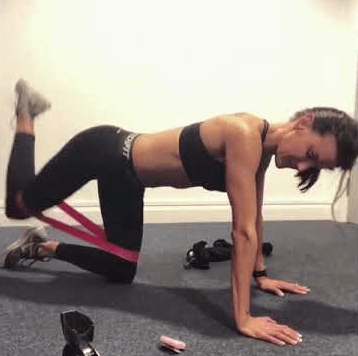
- Step 1 - Get down on all fours with your hands under your shoulders and the knees under your hips. The band should be looped around your mid thighs and it should be taut, but not too tight.
- Step 2 - Extend one leg back and squeeze the glute on your extended leg. Pause for a second and bring it forward again.
- Step 3 - Alternate with the other leg and kick back for a total of 10-20 reps per side.
Pro Tip
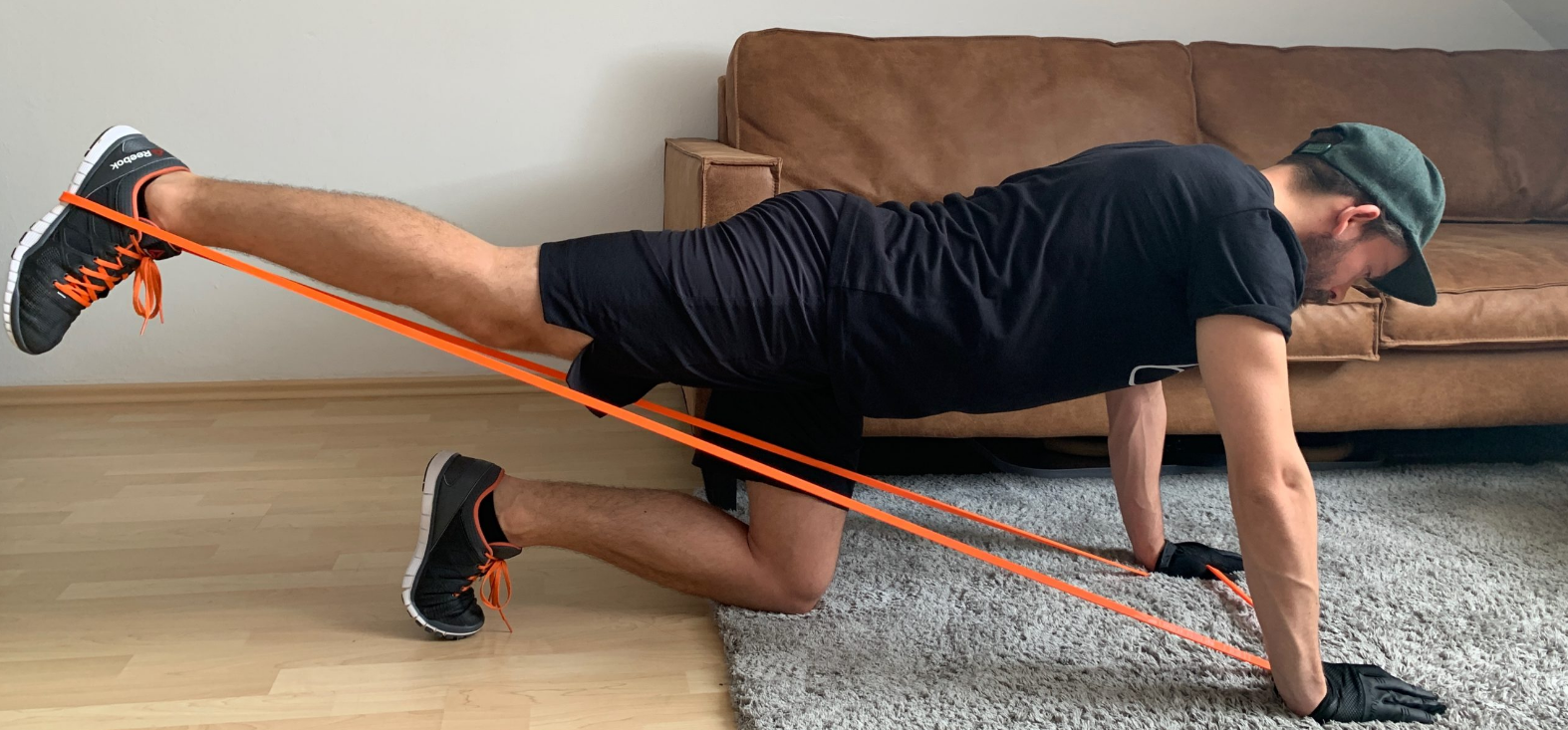
Keep your spine neutral at all times during this exercise. We want to build a strong booty, not a bad back. Be careful to not hyperextend the spine.
Also, do not attempt to kick back until your toes are above your head.
The bands offer additional resistance and even extending until it's above your back should fire up your entire gluteal muscle group.
Suggested Reps - 10-20 Reps per side.
#2 - Banded Lateral Walks (Easier to do)
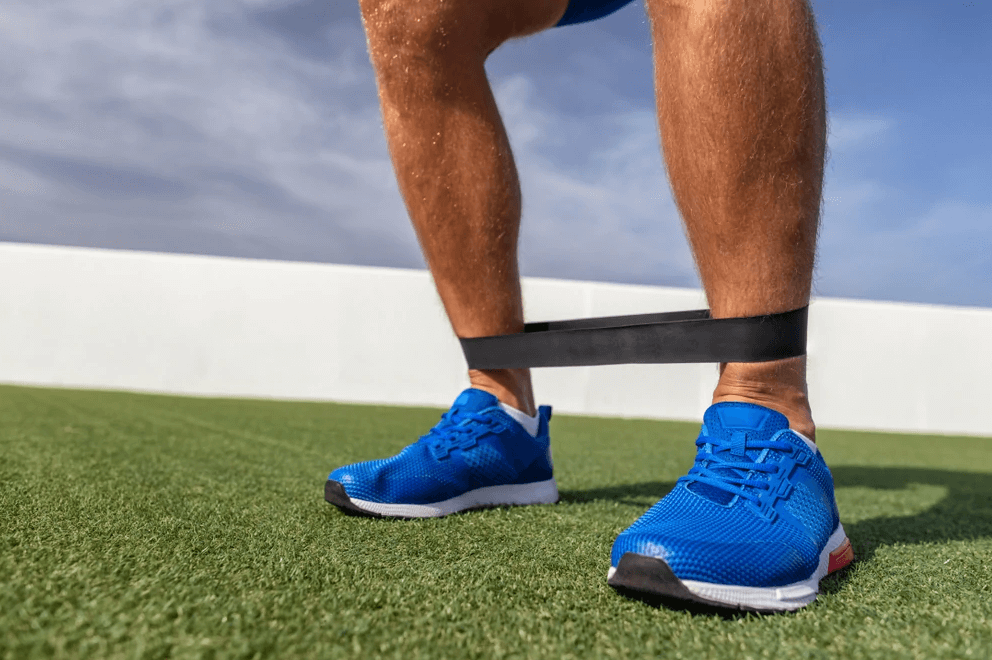
Banded Lateral Walks are another impressive glute exercise. They are also called Lateral Monster walks for a good reason.
These will fire up the medial (side) glutes which play a vital role in pelvic stability and a perkier booty.
Here is a video of this exercise:
How to perform the Banded Lateral Walks
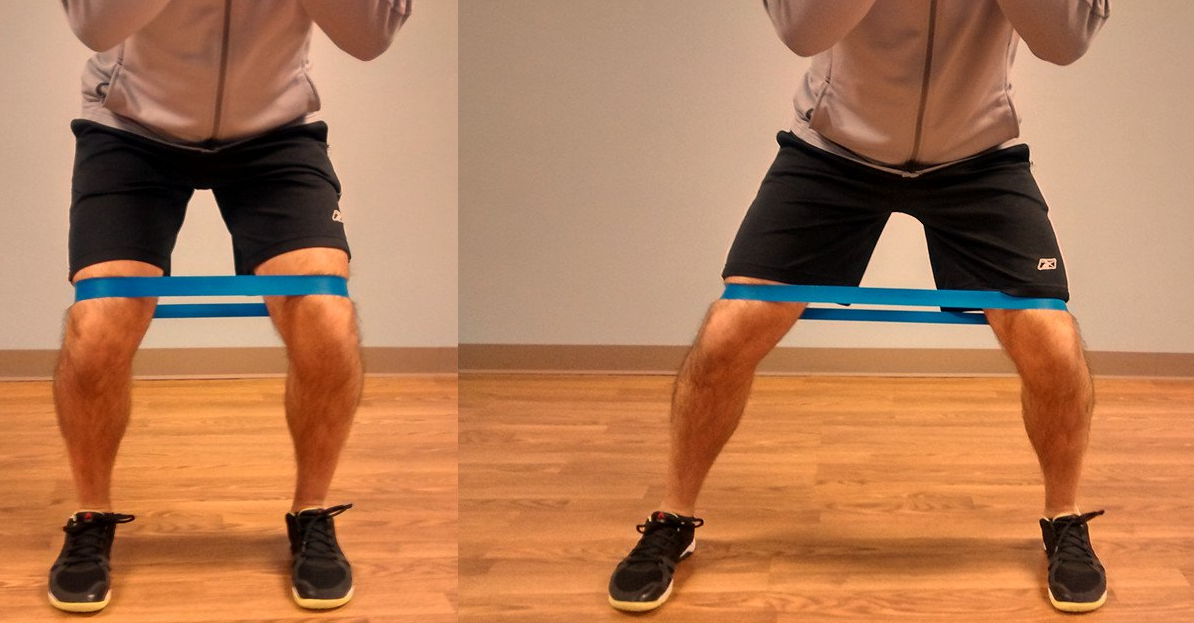
- Step 1 - You need to be standing in a halfway squat position to perform the banded walks. Now, there are some theories that suggest placing the bands above the ankles. But for the Glute meds, you need it to be just above the knees.
- Step 2 - Keep your knees slightly bent and while taking a huge step out to the right, squeeze the glute.
- Step 3 - Now repeat the sideways step with your other leg, moving against the resistance of the band.
- Step 4 - Repeat for as many reps as you want to complete one set.
Pro Tip
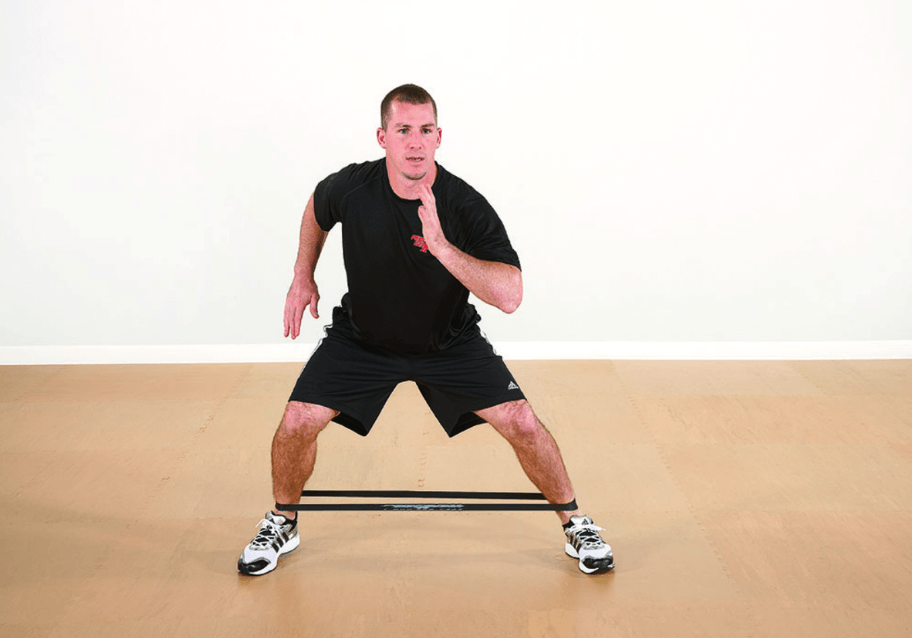
Keep your chest up high and maintain a straight spine throughout the exercise. As you are stepping out to the side, brace your abs inwards so that you don't hyperextend your back. Step on the heel, not on the toe.
Suggested Reps - 30-40 per leg
#3 - Fire Hydrants - For Fastest Results

Fire Hydrants are a classic glute activation exercise, particularly for the medius and minimus. They are also really helpful for those with weak gluteal muscles that come with prolonged sitting.
You can use them to warm up before workouts or as a finisher at the end of your workout as well.
It's an abduction move which moves your glutes away from the midline.
Here is a video of this exercise:
How to perform the Fire Hydrant
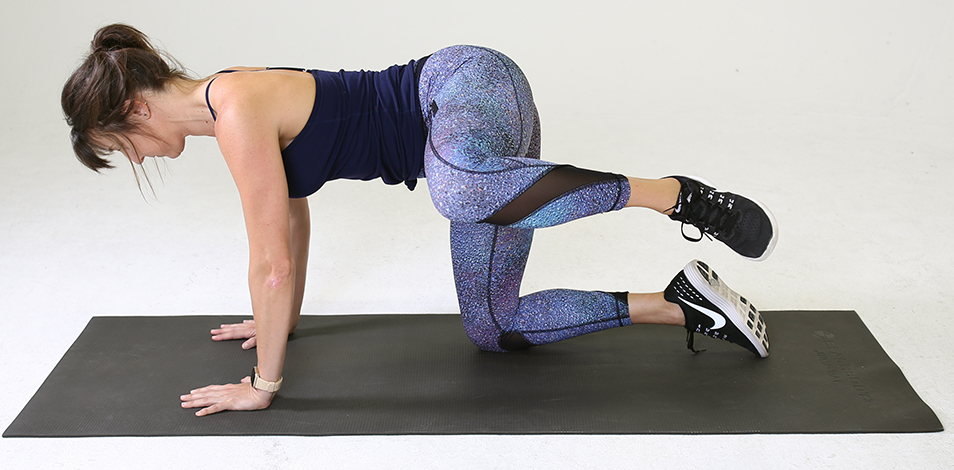
- Step 1 - Start in kneeling position with the knee and foot hip-width apart. Your arms should be under the shoulders and knees under the hips. The resistance bands are most effective when placed just above the knees.
- Step 2 - Next, move your left leg out to the side as far as is comfortable, but do not shift your hips. Maintain a neutral spine while flexing the left knee and squeezing that glute.
- Step 3 - Hold for a second and then bring your leg back into starting position. This completes one rep and 10 to 15 reps per side should be fine for starters.
Pro Tip
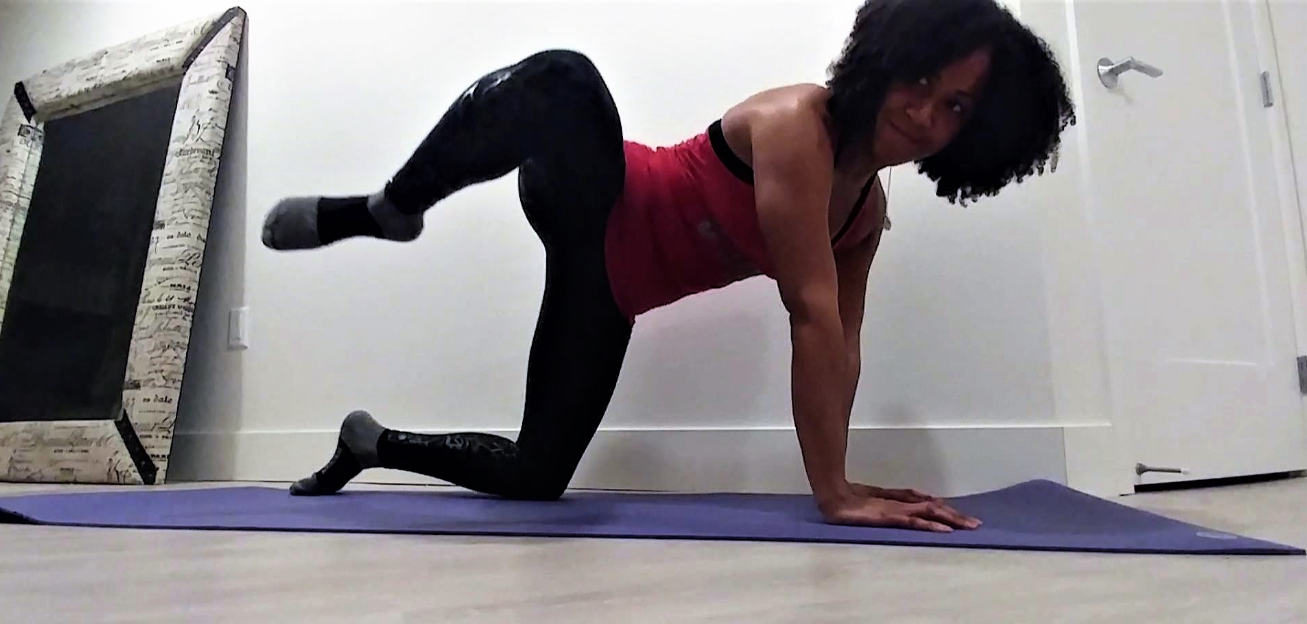
Keep your abs braced and keep the movement slow and controlled. Do not move your knee further than what you can do comfortably. This is a safe range for beginners to fire up the entire gluteal muscle group, without overworking or straining any muscles.
Suggested Reps - 10-15 reps per side.
Don’t Forget Nutrition
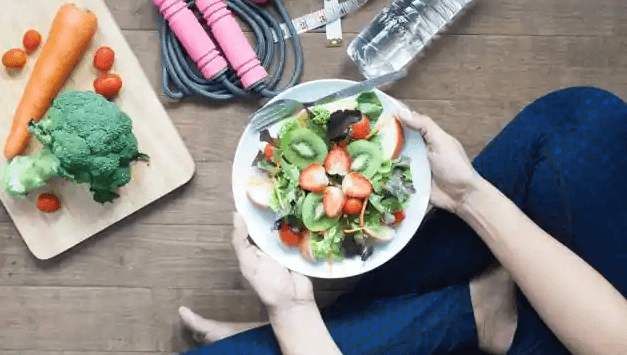
With exercises and equipment stealing your attention, it’s easy to forget the importance of nutrition for any fitness goal. You can have the best equipment and techniques in your training arsenal, but if you feed yourself with junk, that's what you will get out.
So, make sure to clean up your diet too.
You don't need anything fancy to build your booty or any other muscles to be honest.
Just ensure that you eat enough protein, and eat in a calorie surplus to build muscle. If your end goal is to burn fat, include some cardio and eat in a slight deficit.
Common Mistakes to avoid while using resistance bands for growing glutes
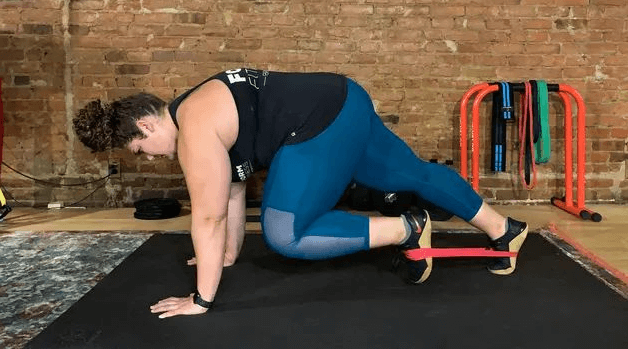
Resistance bands have almost no learning curve. Even rank beginners can easily learn how to use them and perform exercises with good form.
That said, there are some basic rules that you need to keep in mind.
Learn the spine position

Resistance band exercises are fairly simple. But your spine position will determine whether you engage the right muscles or just end up straining your lower back.
When you perform any kind of hip thrusts or glute bridges, make sure that you do not hyperextend your back and rather maintain a neutral spine (or slightly arched).
Always warm up
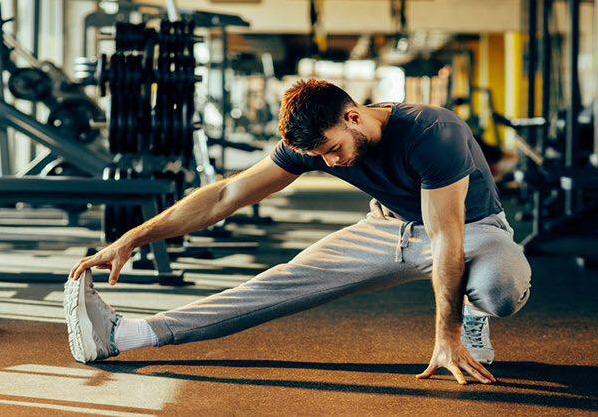
Just because you are not lifting weight does not mean that you don't need to warm up.
You do!
And the best way to warm up is to start with a few bodyweight glute bridges and hip thrusts.
Start with a lower resistance band
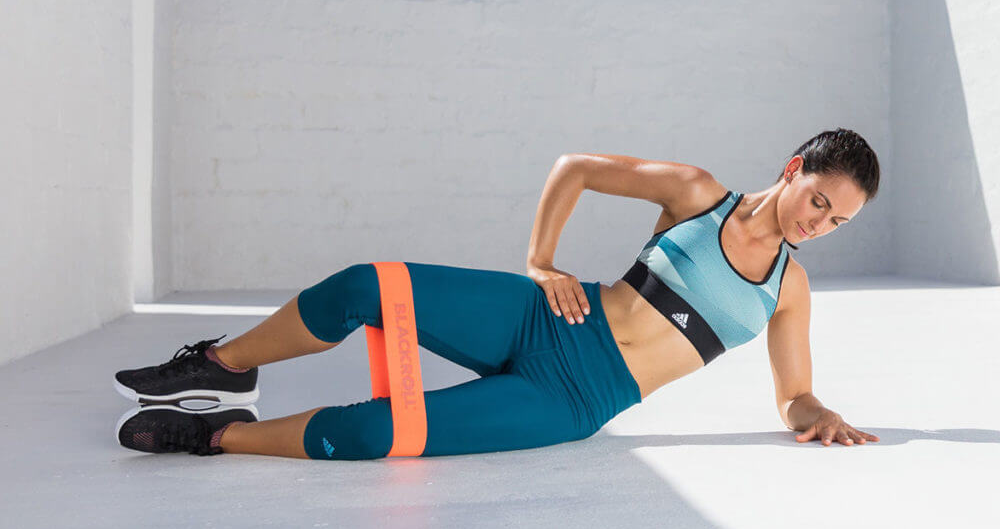
Resistance bands can be deceptive. If you are just beginning, start with a low resistance band to ensure that form isn't compromised. Once you can perform the exercise without breaking form, increase the resistance and weight.
FAQS about growing glutes with resistance bands
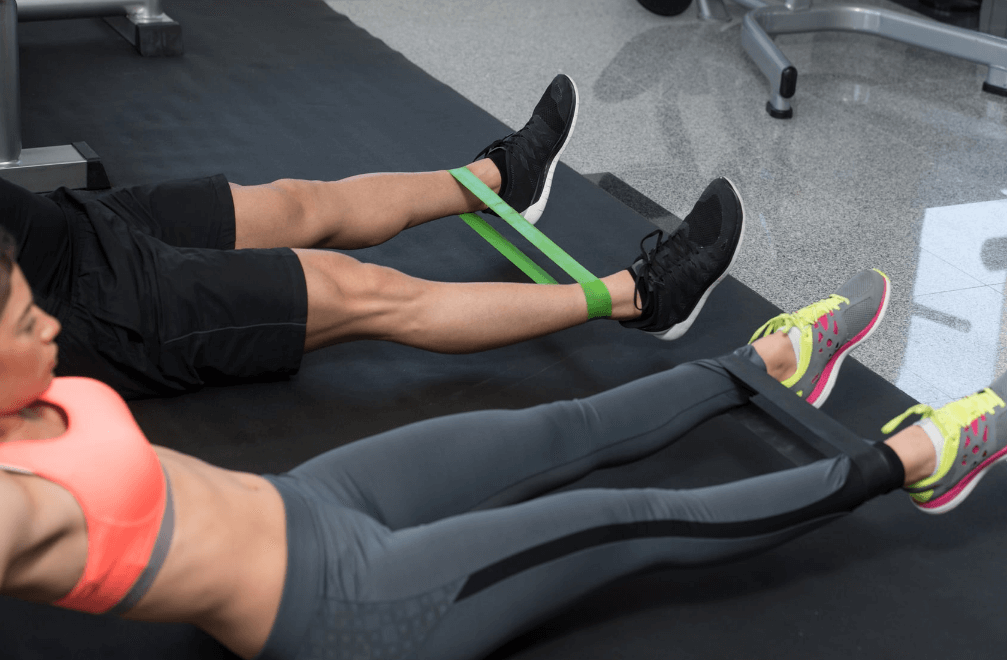
Here are more answers to your questions about growing glutes with the use of resistance bands.
Q. Can you grow your glutes without weights?
A. You sure can. There are clinical studies that show that resistance bands can induce hypertrophy (muscle growth) in the lower body muscles.
Q. What is the size of resistance bands that are needed for glutes?
A. That depends on a variety of factors such as your height, body weight and personal preference. That said, the standard size is 12" x 2" which has worked great for me.
Q. What's the best way to use a resistance band in leg workouts?
A. Resistance bands are versatile and can be used for a variety of exercises. You can use the resistance band for squats, lunges, and many more exercises. But make sure to start with low resistance and gradually increase as your strength grows, that way, for example, if you are doing squats to tone your thighs and butt you get the best results.
Q. Are resistance band exercises for glutes effective?
A. Effective is a broad phrase. But there's ample evidence to show that resistance bands can increase strength, definition, muscle size and flexibility. I think that ticks all the boxes in 'Effective', doesn't it?
Q. Will Glute bands help me lose weight?
A. Glute bands alone cannot be used as a weight loss tool. But you can always incorporate these into your HIIT routine to make it more intense, which in turn, should amplify the amount of calories you can burn.
Q. Are glute bands safe?
A. Glute bands are amongst the safest equipment you can use to build muscles. But, there is no such thing as 100% safe. You can still mess up your form, which can lead to issues such as lower back pain and soreness. So, make sure that you use the right technique and understand how it engages your muscles.
Related Readings:
- Does Running Make Your Butt Bigger or Smaller? What About My Thighs?
- Exercise To Reduce Belly Fat for Female At Home
- Are Kettlebells Worth It?
- Expresso Bike Vs Peloton
- Setting Up A Basement Gym Low Ceiling
- Good Mornings Muscles Worked
Resources:
Ben Mayz
Hi there! I'm Ben, main author and chief editor at Fitlifefanatics.com. I have been obsessed with Strength Training and Fitness for 18 years now.
My passion for living a happy fit lifestyle is what made me realize that fitness is what I wanted for my future.
I went on to earn my Masters in Sports Training & Biomechanics.
My passion for Strength training & fitness and my love of helping others is what made me start Fitlifefanatics.
Here, myself, and a team of specialist aim to provide the most accurate, and actionable information possible in hopes to help foster the fitness community forward.
You can learn more about Fitlifefanatics on our About Page





